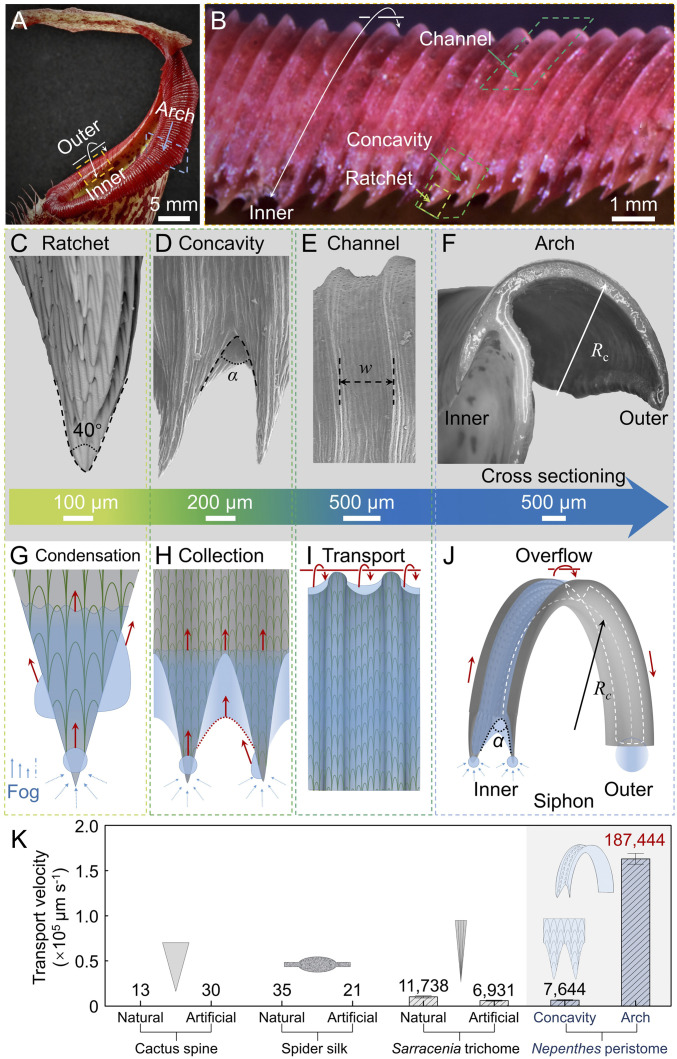Fig. 1.
Sketch of water condensation and transport process on peristome. (A) Optical image of the N. alata pitcher. (B) Inner view of the ratchet teeth projections along the inner edge of the peristome. The ratchet-teeth tips point downward. (C–E) The feature structures of the peristome, including the ratchet, concavity, and channel. (C) Straight rows of overlapping epidermal cells with tips toward the opposite direction of the teeth projections. (D) The concavity in between neighboring teeth. (F) Cross-sectioning of the arch-shaped peristome. (G–J) Schematic images of water condensation and transport on the peristome. Water condenses on the ratchet teeth first and then transports upward to the concavity, which acts as both a collector and a pump to deliver water until it overflows the arch-shaped channel to the outer rim. The communicating vessels constructed after wetting speed up the water-harvesting efficiency. (K) Transport velocity of water condensation on different natural and artificial structures in the dry state for Cactus spine and spider silk and in the wet state for the Sarracenia trichome. The concavity of the peristome can greatly enhance the water transport speed in the wet state. The global water transport velocity on the concavity is 7,644 ± 766 μm s−1. The combined effects of ratchet, concavity, and arch accelerate the water transport speed to 187,444 ± 6,814 μm s−1. See SI Appendix, Table S1 for details.

